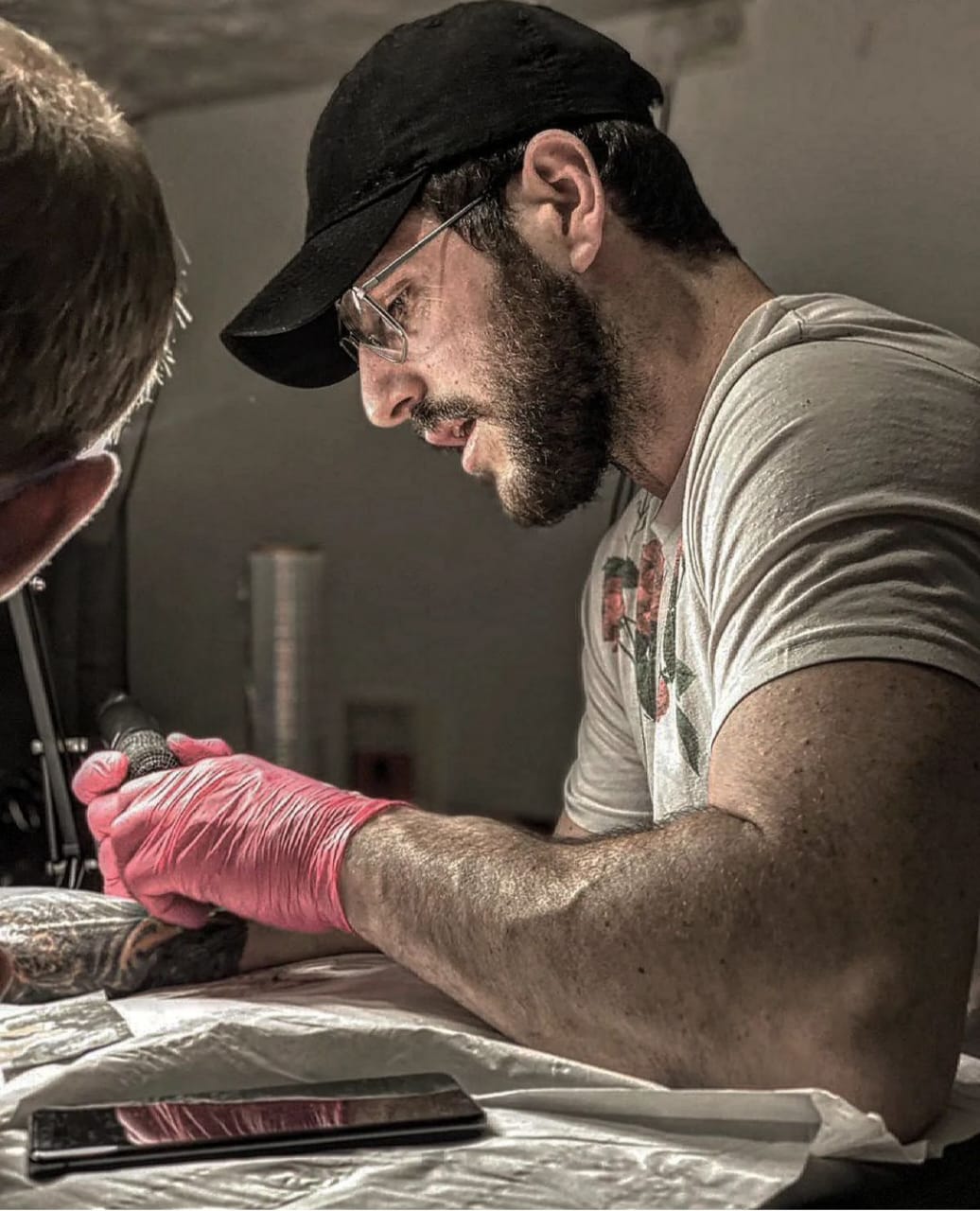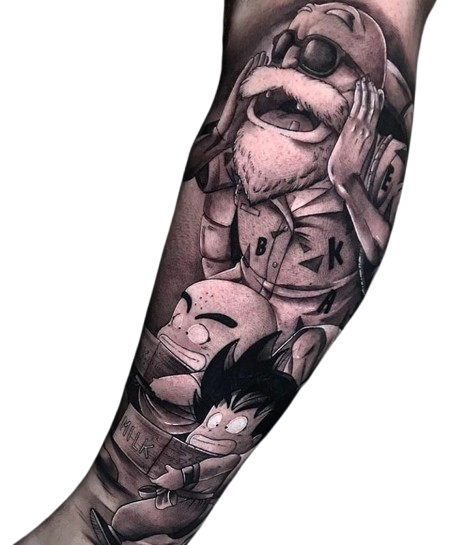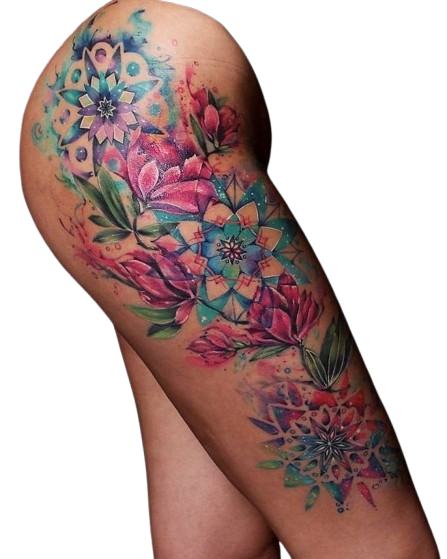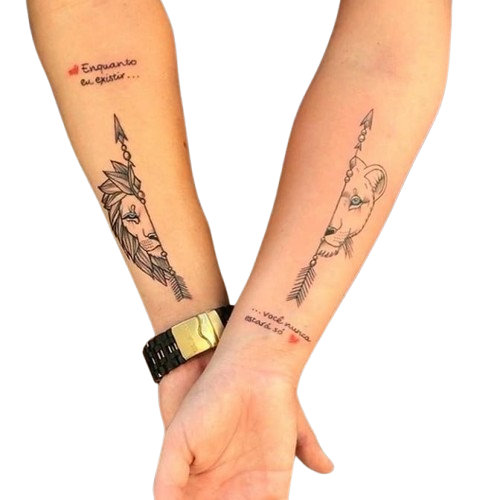The History and Significance of Tattoos: From Ancient Symbols to Modern Art
Tattoos have been an integral part of human culture for thousands of years, serving as markers of identity, spirituality, and personal expression. The history of tattoos is as diverse as the cultures that practice them, with each society using body art to tell unique stories. Here’s a look into the rich and fascinating history of tattoos and their significance across time.

Ink Masters Tattoo Hersonissos
we are more than just a tattoo studio – we are a community of artists and clients who share a passion for creative expression.
Ancient Roots: The Origins of Tattoos
The earliest evidence of tattooing dates back over 5,000 years, found on mummified bodies like that of Ötzi the Iceman, discovered in the Alps. His body bore simple dot and line tattoos, believed to have been part of a therapeutic or ritualistic practice. Similarly, ancient Egyptians used tattoos as markers of social status and religious devotion, with some mummies displaying intricate body art, particularly on women.
In Polynesian cultures, tattooing held immense social significance. The word “tattoo” itself comes from the Tahitian word “tatau,” which means to mark. Polynesian tattoos were a form of storytelling, with each symbol representing personal history, rank, or achievements. These designs were often highly detailed and took years to complete, using traditional hand-tapping techniques.
Cultural Significance Around the World
- Japan: In Japan, the practice of Irezumi (traditional tattooing) dates back to around 10,000 BC. Tattoos were initially used as a form of punishment, but later evolved into a respected art form associated with spirituality and status. By the Edo period, intricate full-body tattoos became popular, especially among members of the working class like firemen and merchants. Today, Irezumi is often associated with the Yakuza, but it remains an admired form of art.
- Maori of New Zealand: The Maori people of New Zealand practiced Ta Moko, a sacred form of tattooing that used chisels to carve designs into the skin. These tattoos were not just decorative but also communicated important information about the person’s lineage, social standing, and personal achievements.
- Native Americans: In many Native American tribes, tattoos held spiritual significance and were used to mark rites of passage or acts of bravery. Each tribe had its own symbols and methods, but the underlying themes of identity and connection to ancestors were common across regions.
Tattoos in Modern Times
The 19th century marked a shift in tattooing with the invention of the electric tattoo machine in 1891 by Samuel O’Reilly. This revolutionized the art form, making tattoos more accessible and affordable to a broader audience. During this time, tattoos began to appear in Western culture, initially associated with sailors, soldiers, and circus performers.
In the 20th century, tattoos became symbols of rebellion and counterculture. From the rockers of the 1960s to the punk movement in the 1970s, tattoos were used to defy societal norms. However, by the late 1990s and early 2000s, tattoos had become mainstream, shedding much of their stigmatized image and becoming widely accepted forms of personal expression.
Today, tattoos are more popular than ever, with people from all walks of life using body art to commemorate meaningful moments, honor loved ones, or simply showcase their creativity. The rise of social media and celebrity culture has further propelled tattoo trends, making it a global phenomenon.
The Symbolism Behind Tattoos
While tattoos are often chosen for their aesthetic appeal, many designs carry deep personal or cultural meanings:
- Religious or Spiritual Symbols: Crosses, mandalas, and other sacred imagery continue to be popular tattoo choices, symbolizing faith, protection, or spiritual growth.
- Memorial Tattoos: Many people choose tattoos to commemorate the life of a loved one, often incorporating dates, portraits, or symbolic elements like birds or flowers.
- Cultural and Tribal Tattoos: For some, tattoos are a way to reconnect with their heritage. Tribal designs, such as Polynesian or Celtic patterns, represent cultural pride and a connection to ancestral roots.
- Personal Milestones: From overcoming hardships to celebrating life events, tattoos often serve as permanent reminders of personal growth and transformation.
Tattoos Today: A Fusion of Tradition and Innovation
Modern tattooing is a unique blend of traditional techniques and cutting-edge technology. Artists today have access to advanced tools, allowing for highly detailed and vibrant designs that were once unimaginable. Custom tattoos have become more personalized than ever, with individuals seeking artwork that reflects their individuality.
Styles like realism, watercolor, geometric, and blackwork have emerged, pushing the boundaries of what tattoo art can achieve. Artists now specialize in distinct styles, turning tattoos into museum-worthy pieces of art that celebrate both the individual and the craft.




Conclusion: Tattoos as Timeless Art
Tattoos have evolved from ancient cultural markers to powerful symbols of personal expression. Whether worn as an emblem of identity, spirituality, or art, the significance of tattoos is deeply embedded in human history. As the art form continues to evolve, tattoos remain a testament to our desire to communicate, connect, and express ourselves through body art.
The history of tattoos is a reminder that while trends may change, the desire to tell our stories through our skin is timeless. Whether you’re considering your first tattoo or adding to a growing collection, you’re participating in a tradition that spans cultures and centuries.


